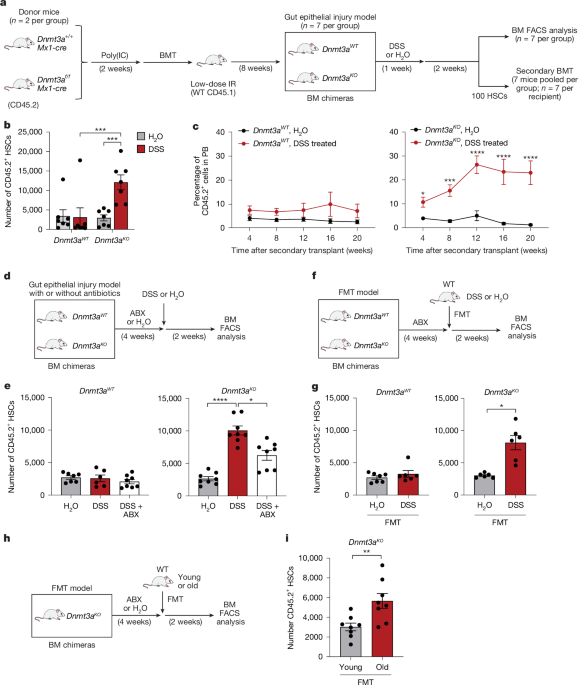
WWW.ARCHDAILY.COM
To Live Well in High-Density Cities: Connections of Urban Density and Public Health
To Live Well in High-Density Cities: Connections of Urban Density and Public HealthPresented by:Save this picture!Hong Kong residential district . Image © leungchopan via ShutterstockAs the global population continues to surge, cities become increasingly complex ecosystems, dense and bustling environments home to millions of people. Today, more than half of the world's population lives in cities, which is expected to grow dramatically in the coming decades. This rapid urbanization presents a complex set of challenges for the architects and planners tasked with creating spaces that can accommodate urban residents' lives.There is a direct and profound connection between the urban environment and the health of its inhabitants. In the context of planning for urban living, health extends beyond physical well-being; it includes mental resilience, social connections, and environmental factors, all of which influence daily life. Health issues can be amplified in high-density cities through poor air quality, high stress levels, social isolation, or limited access to green space.This is why a "healthy city" is no longer a luxury, it is a necessity. Through thoughtful and innovative design, high-density cities and cities that are quickly densifying need to meet the basic needs of their residents and actively, intentionally promote a higher quality of life. Creating health-centered urban spaces is integral to the future of urban planning. The challenge is clear: Cities with high residential densities must be built to sustain and enhance their residents' physical, mental, and social well-being. Related Article Architecture for Public Health: A Joint Approach to Sustainability and Wellness The Impact of High-Density Living on Health
Save this picture!High-density cities offer a unique living experience. As hubs of economic activity, cultural exchange, and innovation, they are places where public health concerns often reach their peak. As cities expand, the strain on infrastructure, natural resources, and public services can exacerbate health issues, from access to healthcare facilities to healthy lifestyle infrastructure.In high-density environments, the effects of environmental factors like pollution, noise, and traffic congestion are felt more acutely. Air pollution, for instance, is a leading contributor to respiratory diseases, cardiovascular conditions, and even early mortality. Noise pollution has been linked to increased stress levels, sleep disturbances, and decreased quality of life. Sedentary behavior is a growing concern, as limited access to green spaces and the dominance of car-centric infrastructure reduce opportunities for physical activity.Save this picture!Urban life brings its own set of mental health challenges that are not prevalent in rural or suburban environments. The constant hustle and bustle, coupled with the lack of personal space and limited access to green space, can lead to heightened stress, anxiety, and feelings of social isolation. In high-density cities, these mental health issues are further compounded by inequality and social segregation, which can prevent individuals from forming meaningful social connections, exacerbating loneliness, and contributing to mental health issues.Key Design Considerations for Health in High-DensitySave this picture!Urban planning plays a critical role in ensuring that cities promote health. The key is to design walkable, bikeable, and connected neighborhoods where mixed-use zoning, residential, commercial, and recreational spaces coexist, reduce the need for long commutes, decrease traffic congestion, and encourage active lifestyles. Ensuring easy access to essential services such as healthcare, education, and recreation fosters a sense of community and security. A well-planned city prioritizes green infrastructure, as parks, gardens, and green rooftops provide recreational spaces, improve air quality, reduce the urban heat island effect, and offer residents a place to relieve stress.Save this picture!Architectural design must focus on creating sustainable and conducive buildings for their inhabitants' health. This includes utilizing eco-friendly materials, ensuring natural ventilation and daylight, and designing spaces that encouraging social interaction. Biophilic design, integrating elements of nature into built environments, is one practical approach. Green walls, indoor plants, and natural lighting help to reduce stress and improve air quality. Ensuring energy-efficient buildings can improve physical health by creating a more comfortable indoor environment. For example, good thermal regulation can help prevent the health issues associated with extreme heat or cold, especially in densely packed areas.Transportation infrastructure plays a crucial role in urban health. High-density cities must prioritize public transit systems that reduce car dependence, mitigate pollution, and provide equitable access to all residents. Creating pedestrian-friendly streets and cycling infrastructure encourages active commuting, contributing to better physical health and reducing traffic-related injuries.Tokyo's Vertical Greening for Urban CoolingSave this picture!Tokyo faces the dual challenge of high population density and extreme temperatures, particularly during summer. The Urban Heat Island (UHI) effect is a pressing issue in Tokyo, where the concentration of buildings and limited green spaces exacerbate the city's already intense heat. In response, Tokyo has embraced a range of innovative solutions, with a particular emphasis on vertical greening and green architecture, to reduce UHI and improve the health and well-being of its citizens. A key component of Tokyo's strategy is its emphasis on green roofs and vertical gardens. Buildings across the city increasingly incorporate rooftop gardens, which help reduce heat absorption while promoting biodiversity. Another critical aspect of Tokyo's UHI mitigation efforts is its push to enhance public green spaces. Creating parks and tree-lined streets, particularly in densely built-up areas, is critical for cooling down neighborhoods. Tokyo has focused on expanding its network of parks and improving the tree canopy cover to absorb excess heat and provide shaded areas for residents. The city's commitment to preserving and increasing green space, coupled with its innovations in vertical greening, showcases how nature can play a central role in combating the UHI effect and supporting public health even in a highly urbanized metropolis.Fostering Community Health Through Public Transport in MedellínSave this picture!Medellín, Colombia has undergone a profound transformation dedicated to urban mobility in recent decades, as one of its most significant achievements expanded accessible and integrated public transportation. Medellín's Metrocable system, which connects residents from hillside communities to the urban core, has fundamentally reshaped how people engage with the city, improving access to healthcare, education, and economic opportunities. The Metrocable, a cable car system that integrates with the broader metro network, has reduced travel time and connected previously marginalized communities to essential services. By making it easier for people to access jobs and healthcare, the system directly addresses some social determinants of health, particularly in historically underserved areas. The Metrocable has become a powerful symbol of social mobility, showing how transportation can bridge spatial divides and foster greater social inclusion. The combination of more accessible transport and quality public spaces creates a more cohesive community, helping to reduce social isolation and improve mental health outcomes for residents in high-density neighborhoods.How Cities Can Reduce Air Pollution like SingaporeSave this picture!Singapore stands as a global leader in integrating green architecture, exemplifying how cities can tackle air pollution while enhancing the health and well-being of their residents. The city-state has taken bold strides to merge intensifying urbanization with nature, incorporating vertical gardens, green rooftops, and expansive nature reserves into its densely built environment. By doing so, Singapore has improved its air quality and fostered a more livable urban landscape. One of the most iconic examples of this initiative is Gardens by the Bay, an ambitious project that features the renowned Supertree Grove. These towering structures, covered in plants, act as vertical gardens, purifying the air while offering a striking visual element to the city. Beyond their aesthetic appeal, the Supertrees are part of an innovative system that collects rainwater, provides shade, and contributes to the city's cooling, all while promoting biodiversity.Mental Health and Superblocks in BarcelonaSave this picture!Barcelona, Spain, has long been a pioneering example in innovative urban design, particularly in creating environments that prioritize the well-being of its residents. The Superblocks program is at the forefront of these efforts, an innovative initiative to repurpose city streets, reduce traffic, enhance pedestrian accessibility, and increase green spaces. The initiative successfully transforms each neighborhood into walkable, more vibrant spaces for people to live. Superblocks are designed to limit traffic to just essential vehicles, freeing up large portions of the city for public and pedestrian use. These newly reclaimed areas are transformed into pedestrian-friendly streets with wider sidewalks, parks, and bike lanes, encouraging physical activity and social interaction. The reduction in noise and air pollution, coupled with the increase in green spaces, creates a more calming and supportive environment for residents. Studies have shown that these changes lead to improved mental health outcomes by reducing stress, anxiety, and social isolation. As other cities adopt similar strategies into neighborhood planning, the success story of Barcelona's Superblocks offers a powerful example of promoting mental health and social connection at the scale of the city block.The Responsibility of Design in Healthy CitiesSave this picture!The future of high-density cities lies in their ability to balance the challenges of urbanization with the need for healthy, sustainable living environments. The design and planning of these spaces will be crucial in this transformation. By embracing integrated design strategies that prioritize physical, mental, and social health, cities will embrace growing populations and promote healthy lifestyles for all residents.These case studies from around the world demonstrate that regardless of geography or socioeconomic status, there are actionable solutions to improve health outcomes in urban settings. The path forward lies in collaboration, innovation, and a commitment to designing cities that foster human well-being while mitigating environmental and social risks. High-density towns have the potential to lead the way in creating a healthier, more sustainable future for urban populations everywhere.Save this picture!This article is part of the ArchDaily Topics: Building Wellbeing: Designing Spaces for Healing, presented in collaboration with the Hushoffice. With its line of A-class pods Hushoffice helps create acoustically balanced workplaces that offer great environment for collaboration and focus, foster employee wellbeing, and accommodate the needs of neurodiverse staff, as well as employees with motor impairments.Every month we explore a topic in-depth through articles, interviews, news, and architecture projects. We invite you to learn more about our ArchDaily Topics. And, as always, at ArchDaily we welcome the contributions of our readers; if you want to submit an article or project, contact us.
Image gallerySee allShow less
About this authorOlivia PostonAuthor•••
Cite: Olivia Poston. "To Live Well in High-Density Cities: Connections of Urban Density and Public Health" 26 Apr 2025. ArchDaily. Accessed . <https://www.archdaily.com/1029108/to-live-well-in-high-density-cities-connections-of-urban-density-and-public-health&gt ISSN 0719-8884Save世界上最受欢迎的建筑网站现已推出你的母语版本!想浏览ArchDaily中国吗?是否
You've started following your first account!Did you know?You'll now receive updates based on what you follow! Personalize your stream and start following your favorite authors, offices and users.Go to my stream
0 Commentarii
0 Distribuiri
38 Views












